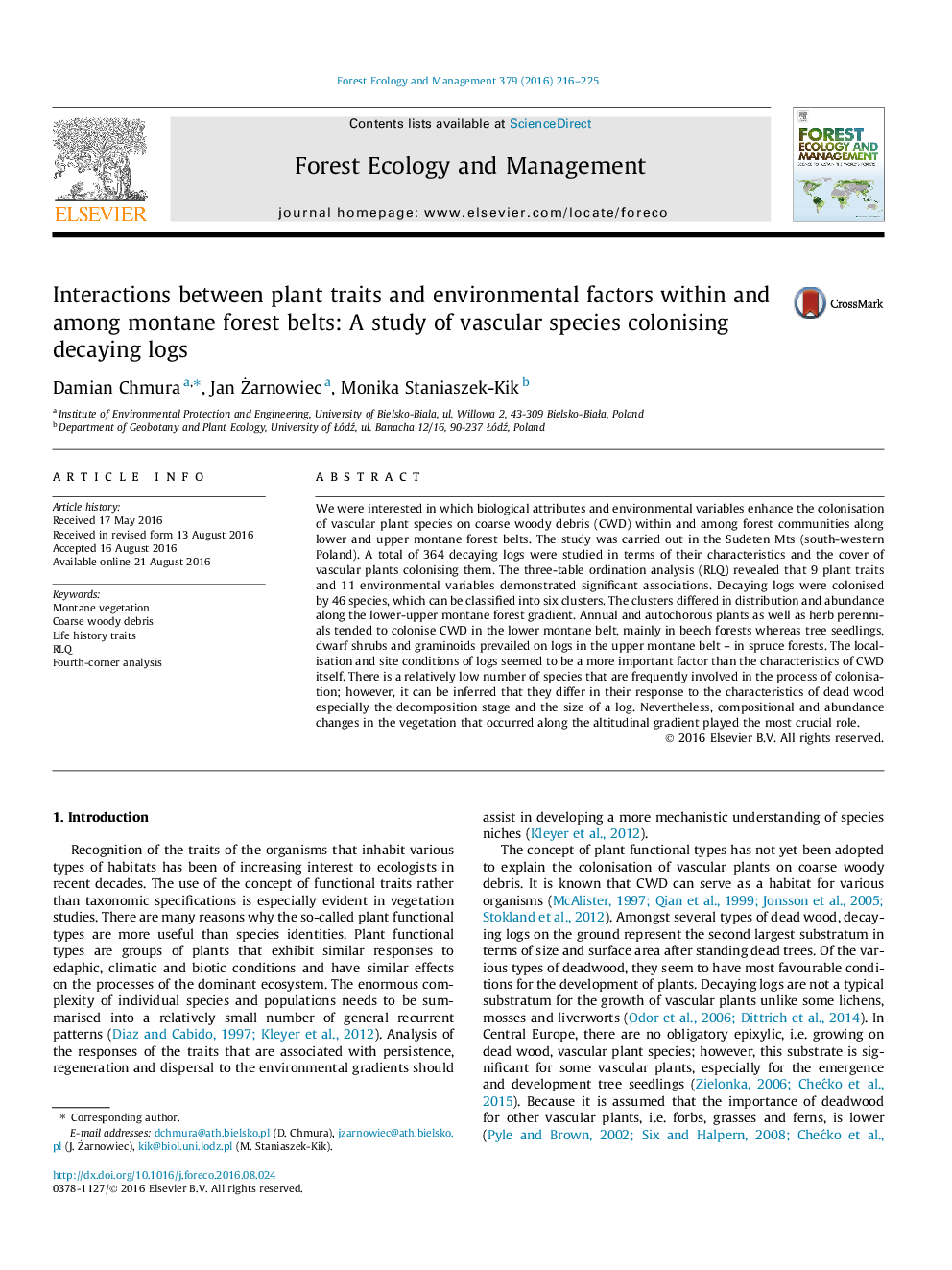| کد مقاله | کد نشریه | سال انتشار | مقاله انگلیسی | نسخه تمام متن |
|---|---|---|---|---|
| 6459645 | 1421379 | 2016 | 10 صفحه PDF | دانلود رایگان |
- We tested environmental factors and traits of vascular flora colonising decaying logs.
- Decaying logs were colonised by 46 species, that can be classified into six clusters.
- Localisation and site conditions of logs are more important factor than their traits.
- Plants differ in their response to dead wood traits mainly decomposition and log size.
- Changes in vegetation along the altitudinal gradient played the most crucial role.
We were interested in which biological attributes and environmental variables enhance the colonisation of vascular plant species on coarse woody debris (CWD) within and among forest communities along lower and upper montane forest belts. The study was carried out in the Sudeten Mts (south-western Poland). A total of 364 decaying logs were studied in terms of their characteristics and the cover of vascular plants colonising them. The three-table ordination analysis (RLQ) revealed that 9 plant traits and 11 environmental variables demonstrated significant associations. Decaying logs were colonised by 46 species, which can be classified into six clusters. The clusters differed in distribution and abundance along the lower-upper montane forest gradient. Annual and autochorous plants as well as herb perennials tended to colonise CWD in the lower montane belt, mainly in beech forests whereas tree seedlings, dwarf shrubs and graminoids prevailed on logs in the upper montane belt - in spruce forests. The localisation and site conditions of logs seemed to be a more important factor than the characteristics of CWD itself. There is a relatively low number of species that are frequently involved in the process of colonisation; however, it can be inferred that they differ in their response to the characteristics of dead wood especially the decomposition stage and the size of a log. Nevertheless, compositional and abundance changes in the vegetation that occurred along the altitudinal gradient played the most crucial role.
Journal: Forest Ecology and Management - Volume 379, 1 November 2016, Pages 216-225
